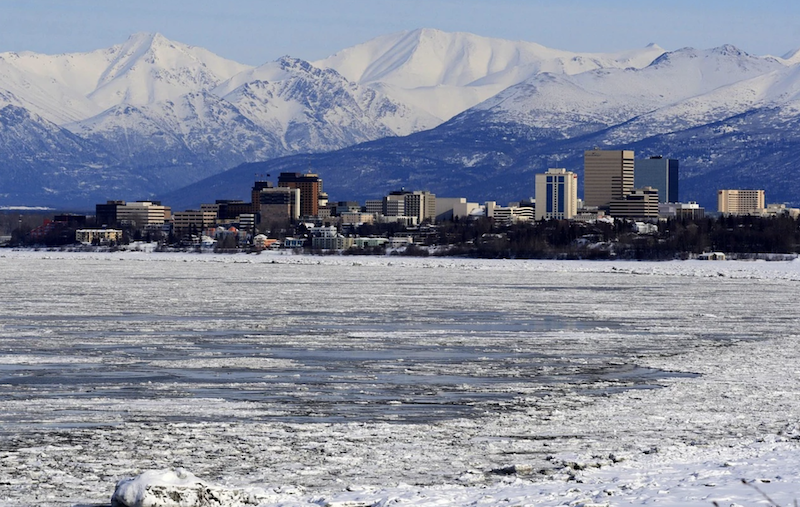The U.S. Department of Energy’s (DOE’s) National Renewable Energy Laboratory (NREL) has expanded its collaboration with Alaska’s Cold Climate Housing Research Center (CCHRC).
“The Arctic environment, with its high cost of energy in remote communities and challenging climates, provides a strategic platform for NREL’s research into renewable power, sustainable transportation, energy efficiency, and energy systems integration,” NREL says. Based in Fairbanks, Alaska, CCHRC has designed energy efficient, healthy homes in some of the harshest conditions on Earth.
Temperatures in the Fairbanks area range from minus 50 degrees to 80 degrees Fahrenheit each year. NREL and CCHRC have complementary research capabilities—whole-building energy use, building energy system integration, health and indoor air quality, and energy technology design and deployment in extreme and rural environments.
NREL’s 10-year strategy includes a focus on Integrated Energy Pathways, an expanding research area that guides solutions to enable the efficient and reliable operation of our future energy system. “The expanded collaboration between the National Renewable Energy Laboratory and the Cold Climate Housing Research Center will allow us to test the resiliency and reliability of energy-efficient and renewable energy technologies in extreme weather conditions,” said Daniel R. Simmons, assistant secretary for the office of energy efficiency and renewable energy.
Related Stories
| Dec 22, 2011
Federal home weatherization program has impacted 6.8 million homes
More than 6.8 million homes have been weatherized using federal, state, utility, and other funds under the American Recovery and Reinvestment Act.
| Dec 22, 2011
Group developing BIM data standards
A collaboration among Georgia Tech’s Digital Building Lab, the Precast Concrete Institute, the American Concrete Institute, and the American Institute of Steel Construction aims to develop global standards for transportation of three-dimensional digital models among fabricator, architecture, engineering, and construction groups.
| Dec 22, 2011
New green code spells out thermal requirement for roof retrofits
The 2012 International Green Construction Code (IgCC) includes a straightforward approach to minimum thermal requirements for roof and wall systems.
| Dec 22, 2011
AGC’s safety conference Jan. 11-13 in San Antonio
The Associated General Contractors of America’s national meeting for safety and health professionals will take place Jan. 11-13, 2012 in San Antonio, TX.
| Dec 22, 2011
Proposed New York City zoning revamp encourages rooftop solar and wind energy
New zoning regulation proposals to make it easier for building owners in New York City to make their structures more sustainable have entered the public approval process.
| Dec 15, 2011
Dayton, Ohio schools saving $2.6 million annually by building to LEED
On average, green schools save about $100,000 a year on operating costs, including energy and water savings.
| Dec 15, 2011
Building to LEED standards can pose new risks for construction workers
Workers on these projects suffer a 24% increase in falls to lower levels during roof work, which researchers attributed to the installation of solar panels, and a few other risks.
| Dec 15, 2011
NRDC charges Maine governor with weakening green wood requirement
The FSC program is administered through the Leadership in Energy and Environmental Design (LEED) and requires wood to be harvested in a sustainable way.
| Dec 15, 2011
Post-tornado, Tuscaloosa seeks to create walkable urban, retail areas
Block sizes initially were limited to a maximum perimeter of 1,750 feet, with no side of the block being longer than 500 feet.
| Dec 15, 2011
Allentown, Pa. city council asked to repeal union-friendly law
The mayor of Allentown, Pa. asked the City Council to repeal a year-old ordinance that forces contractors to hire union workers for large city projects funded with state and federal dollars.
















